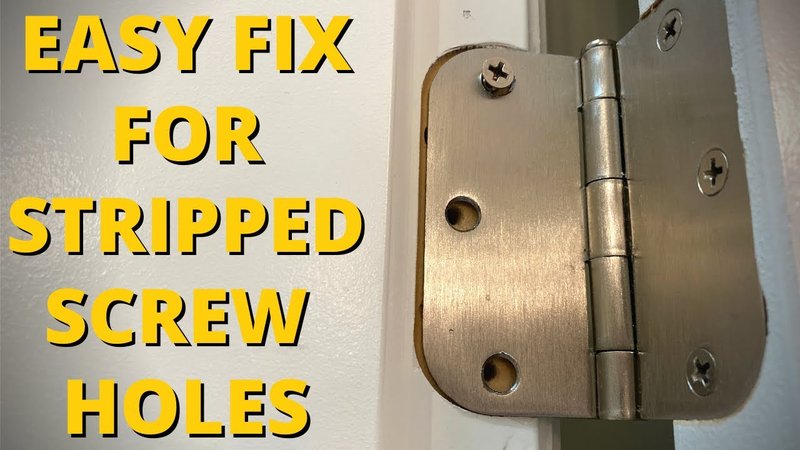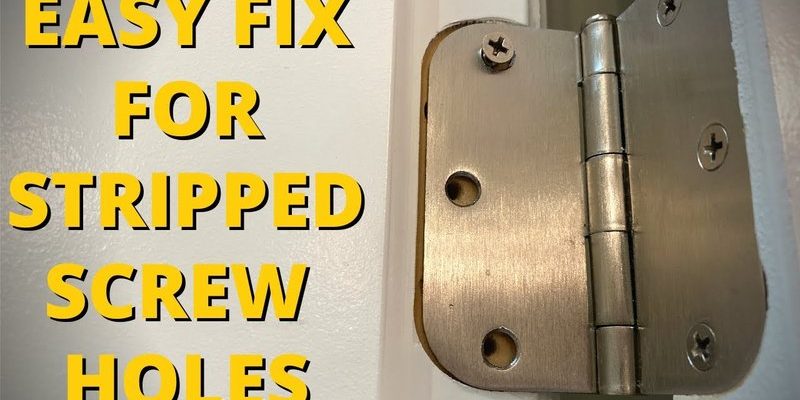
Honestly, seeing an ugly, fast-growing rust patch on a door hinge feels unfair—especially if the hinge looked fine last season. But there’s a reason for every bit of that crust and squeal. Door hinges live at the front lines, battling the weather, humidity, and all sorts of grime. With the right steps, you can troubleshoot what’s causing the fast corrosion and probably save your hardware (and sanity) before you’re stuck wrestling with your door every morning.
Why Do Exterior Door Hinges Corrode So Quickly?
Here’s the thing: exterior door hinges don’t get a break. Rain, snow, humidity, and even salty air if you’re near the coast—these elements are relentless. Most hinges are made from steel or brass, and while some have protective coatings, these only go so far. Once a protective finish wears down or gets scratched, moisture can seep in, and that’s when corrosion takes off fast.
You might be wondering if your hinges are just low quality or if something unusual is happening. In truth, even *brand-name* hinges like Schlage or Kwikset will corrode under harsh conditions, especially if their finish isn’t designed for outdoor use. Sometimes, a universal replacement hinge isn’t quite as rust-resistant as labeled either. Plus, hinges are rarely cleaned or maintained—out of sight, out of mind—so dirt, leaves, and road salt can build up, speeding up the rust.
A tiny scratch from installing the hinge, or even a chip from a flying pebble, can break the protective layer. After that, oxygen and water do their thing. If your area has high humidity or your hinge is close to a sprinkler or dripping gutter, expect corrosion to happen even faster.
Common Signs of a Corroding Exterior Door Hinge
Spotting corrosion early can save you tons of hassle. Start by opening and closing your door slowly—listen and look closely. Here are the biggest red flags to watch for:
- Rusty stains or spots: These might be orange or brown. They often start near the hinge pin or at the edges of the plates.
- Stiff or squeaky movement: If the door squeals or feels gritty, that usually means corrosion is creeping into the moving parts.
- Powdery residue: Sometimes, oxidized metal leaves behind a white or green powder—especially on brass or zinc hinges.
- Flaking or bubbling metal: When rust progresses, it actually eats away at the metal, making it look flaky or uneven.
Don’t ignore these clues. Even if things don’t seem urgent, corrosion spreads, and what starts as a rough patch can eventually make your door tough to use, or even damage the frame.
What Causes Fast Corrosion on Door Hinges?
Now, let’s dig into why some hinges seem to rust overnight while others last for years. The answer usually comes down to three things: materials, environment, and neglect.
- Material quality: Not all hinges are built for the outdoors. If your hinge isn’t labeled as “exterior” or “weather-resistant,” it’ll corrode quickly no matter the brand.
- Harsh environments: Live near the ocean? Lots of rain or humidity? Driveway salt? These all ramp up corrosion. Salt is especially brutal, “syncing” with moisture to create a chemical reaction that’s tough on metal.
- Lack of maintenance: Even the best hinge will fail if dirt, grit, or chemical residue is left to build up. Lubrication and cleaning are the “code” to keeping corrosion at bay.
Sometimes, quick corrosion is just a sign it’s time to “reset” your approach—better materials, better care, or a new product altogether.
Step-by-Step Troubleshooting for Rapid Hinge Corrosion
Let me walk you through how to assess and maybe even save a hinge that’s rusting in record time:
- Inspect closely: Open the door wide and check the hinge on all sides. Look for peeling, pitting, or heavy discoloration.
- Try cleaning first: Remove any loose rust using a stiff brush or a bit of steel wool. Rinse with water, then dry completely.
- Apply a rust remover: Use a commercial rust remover or a simple mix of baking soda and vinegar. Let it sit, then scrub gently.
- Lubricate well: Use a silicone-based lubricant (never plain oil, which can trap dirt). This helps prevent friction and blocks moisture next time it rains.
- Check for damage: If the metal is eaten through or the hinge pin is stuck, consider replacing the hinge entirely.
When in doubt, take the hinge off the door and treat it on a flat surface. It’s much easier, and you’ll do a much better job.
When Should You Replace the Hinge?
Sometimes, no amount of TLC will bring a hinge back from the dead. If your hinge is so corroded that it’s flaky, cracked, or it leaves orange streaks down the door, it’s time to move on. Replacing an exterior hinge is a bit like swapping a dead battery in a remote—it’s quick, and it’s usually cheaper (and less stressful) than fighting with a worn-out part every day.
Here’s what to look for:
- Deep pitting or holes: This means the metal’s structure is compromised.
- Stuck or broken hinge pin: If you can’t “reset” the movement after cleaning and lubricating, it’s easier to swap the hinge.
- Repeated corrosion: If your hinge keeps rusting back within a few weeks, the material just isn’t right for the conditions.
If you do replace the hinge, go for a model specifically labeled for exterior or marine use. Stainless steel, brass, or powder-coated steel are strong options. You can find universal door hinges that fit nearly any brand, but double-check the screw holes so you don’t have to “pair” new holes with the old ones.
How to Prevent Future Hinge Corrosion
Here’s a secret: a little bit of prevention goes a long way. With a few simple habits, you can add years to your exterior door hinges—no matter the brand or price tag.
- Keep them clean: Every season, wipe your hinges with a damp cloth to remove dust, salt, and grime.
- Lubricate twice a year: Use a silicone-based spray, which won’t attract dirt like traditional oil. Just a quick squirt as part of your spring and fall cleanup works wonders.
- Check for leaks above: Gutters, rooflines, or sprinklers that drip directly onto your door will speed up corrosion. Redirect water flow if possible.
- Touch up paint: If your hinge is painted, keep the finish intact. Chips or scratches = instant rust zone.
If you live somewhere extra wet or salty, consider swapping basic hardware for high-end, marine-grade hinges—think of it as upgrading to a waterproof “code” for your home’s entry system.
Comparing Universal vs. Brand-Specific Hinges for Durability
You might be tempted to grab the cheapest universal hinge at the hardware store, but here’s what I’ve learned: not all hinges are created equal. Brand-name exterior hinges (like Schlage, Kwikset, or Yale) often cost a few dollars more, but you’re paying for weather-rated finishes and stronger alloys. Universal hinges are great in a pinch, but they might not “sync” perfectly with your door or hold up as long under tough conditions.
If your original hinge was a trusted brand and lasted a decade, consider sticking with that. But if you need a fast fix or you’re “resetting” a whole set of weathered doors, universal hinges can do the job—just choose stainless or powder-coated and double-check those screw patterns so you don’t end up drilling new holes.
Pro tip: Always take the old hinge to the store. Nothing beats a real-life side-by-side comparison when you’re dealing with finicky door hardware.
Final Thoughts: Taking Charge of Fast-Corroding Door Hinges
Corroding exterior door hinges feel like a tiny problem—until the day your front door screeches, jams, or starts dropping rust flakes onto your porch. But with a little attention, you can stop corrosion in its tracks, swap out doomed parts, and keep your entry swinging smooth for years. Regular cleaning, the right lubricant, and quality materials are key—no elaborate “sync” or code required. And if your old hinge really is on its last legs, replacing it is easier than you think. All it takes is a few basic tools, a steady hand, and the right hardware for your door’s needs. That way, the only thing your visitors will notice is how easily your door opens—not the sound of rusty hinges crying for help.
